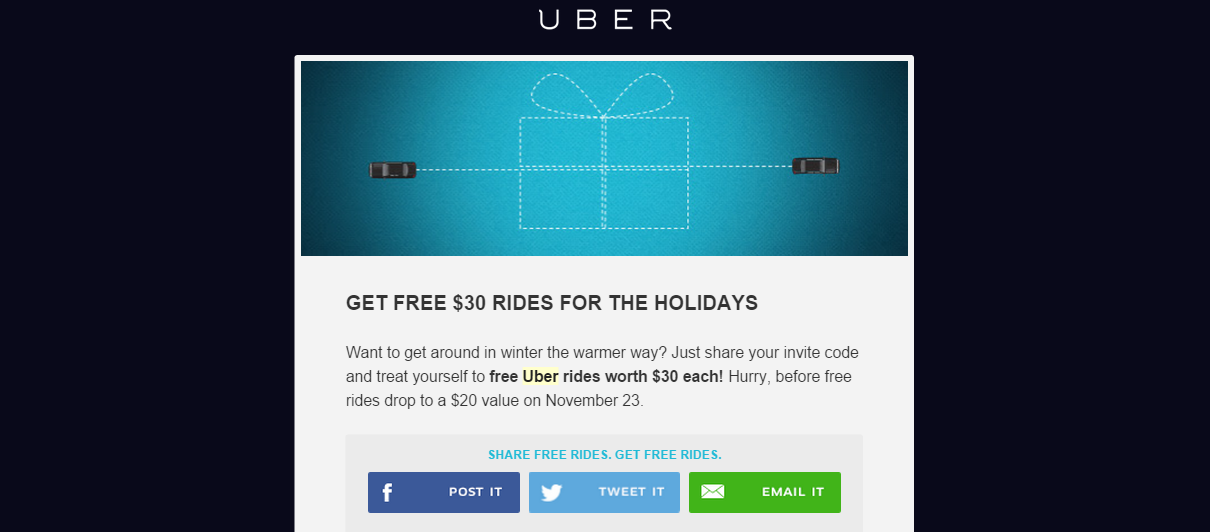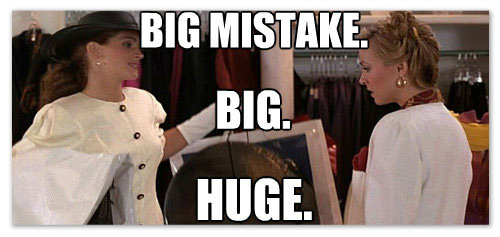When it comes to growth hacking, the first step is getting people into your funnel. Here are our top 5 tips for success.
The term “growth hacker” was coined in 2010 by Sean Ellis.
It has become synonymous with marketers and startup technology companies who utilize a combination of creativity and non-traditional methods mixed with web-based analytics and social metrics to create brand awareness and expand their user base.
[Never heard the term growth hacker before? Check out our beginner’s guide to growth hacking for a great introduction to the topic.]
Success stories like Hotmail and Dropbox have become hallmarks of the growth hacking movement. Hotmail started out by simply posting a link to their site at the bottom of all sent emails, and Dropbox allowed users to expand their storage capacity by inviting friends to join. In both cases, these simple growth hacks proved incredibly effective.
Growth Hacking Conversion Funnel
Under the umbrella of growth hacking, there is a core concept that has become indispensable: the conversion funnel, sometimes referred to as a growth hacking funnel.
The idea encompasses the three basic steps that are central to establishing and expanding your user base, including attract, activate, and retain.
Like a funnel or upside down triangle, the first layer is wide, and it narrows as you convert interested parties into paying or subscribing customers.
Attract
This step involves drawing in as large of an audience as possible.
Not every person who views a website or downloads an app will become a long-time or paying user, so you need to bring in as many people as you can before the user base starts to narrow down. This is the area of the funnel where you start to hear the word “virality.”
One of the most famous examples of a company that really owned this stage was Facebook. After you sign up, the first thing they asked (and continue to ask) was if you wanted to invite your friends. The thought process behind this is two-fold:
1. First, the site works much better if you have contacts onboard. An empty newsfeed is simply no fun at all.
2. It allowed the company to quickly and inexpensively grow their user base.
Activate
The second section revolves around transitioning as many of these new participants as possible into engaged users. After all, these are the people who will drive your growth.
On a site like Etsy, this stage might be where users will either start to create and post items or buy something. At this point in the funnel, they are regulars on your site or app but not quite “advocates” yet.
This is where data and analytics will become even more important. Companies will closely monitor which users are dropping off their site and why. Outgoing surveys are critical.
Understanding your target audience is particularly important during this stage. Many companies will start to refine their user personas, which are profiles created by growth hackers to identify and describe their core demographic.
These profiles are very in-depth and help a company refine their business practices to find the best methods of operation. Here is a great article on creating user personas from your Google Analytics data.
Retain
The bottom of the funnel is focused on retaining these users and, if possible, converting them into sales.
This is the key moment where active users become “advocates” for your brand. Consumers who genuinely love your product are likely to tell their social circle about it and become one of your cheapest and most effective sources of advertising.
A drip email marketing system is often beneficial here. A drip campaign involves sending your users emails at certain points based on where they fall in your funnel.
It’s also a good idea to start rewarding your most loyal participants. Many companies make use of leaderboards, offer special deals for the most active users, or even host exclusive events.
In case it wasn’t clear, customer support is critical during this stage. If something goes wrong, you want to turn a negative experience into a positive one. It all comes down to one simple phrase: “Show love, get love.”
This article will primarily focus on the upper tier of the growth hacking funnel. This first step is critical because it doesn’t matter how great your product is if nobody knows about it!
Growth Hacking Tip #1: Build Good Karma by Being Helpful
At the annual Traffic and Conversion Summit in 2014, famous Shark Tank investor Kevin O’Leary said: “Nobody is indispensable. Nobody. Not you, not me, not anybody else. If you remember that, you will work much harder.”
This is a great piece of advice. There is always somebody who could do what you do, and the chances are that several people are already trying. That’s just another reason you need to work your tail off to become as valuable to your community as possible!
By taking the time to reach out to your potential customers and provide genuine help, you can establish yourself as a leader in the area and somebody who’s difficult to replace. But what exactly does being helpful mean?
A great example is Quora, a website whose tagline is “The best answer to any question.” Many people will provide thorough and quality responses to questions and, at the bottom of their response, they will add a link to their website or email address.
These answers not only help to garner goodwill and add to your legitimacy, but they are a great way to get free advertising. Check out a good example from a yoga video creator who uses Quora to expand her G-box video business.
This is just one way to be helpful and build good karma. Guest blogging is another potent tool. By guest blogging, you can gain access to a whole new group of potential users, once again, for free!
Helping others is often the best way to help yourself.
Growth Hacking Tip #2: Extensively Test Your Emails
Don’t let anybody fool you; email marketing is far from dead. It remains by far one of the quickest and most effective ways to push people into your funnel.
Here is a great example from a company that I love: Uber.
Instantly Uber gets your attention by stating you can get rides for free! Yet, they also put a timeline on it. This is an awesome email header — short and simple.
The inside of the email is very short, but it works. Uber tells you how you can get free rides during the holidays, one of the craziest times of the year for travel.
Copy writing doesn’t have to be wordy. With just a few great tag lines, you can send people to your landing pages and really increase click-through rates.
There are dozens of services that will help you design, send, and analyze your emails. Since growth hacking by nature is lean, you may want to check out an incredible free service called MailChimp. Mad Mimi is another excellent alternative.
Before you start to send out these messages, though, take the time to test them … and test them again!
First of all, make sure that your email will open in every client. There is no use sending out mass amounts of email if they have trouble with a major brand like Hotmail or Gmail. A good way to quickly test this is to set up fake email accounts yourself or to try and reach your friends. Make sure that you watch the bounce rates on these test batches.
Second, use images intelligently. Do not send a single large image without text. Spam filters are designed to weed out these types of emails. They can’t read images and generally will assume you are a spammer.
Third, don’t send emails to old or inactive lists. When a consumer’s ISP reads a very low engagement level, they are likely to block your domain and IP address.
If you notice that your email list seems a bit outdated, there are a few simple steps you can take to try and breathe life back into it.
Some organizations find it useful to send out an email of introduction, to let everybody on their email list know who they are, and ask if they would still like to be contacted. Leveraging a special offer to see what the response is like, and keeping only the respondents who are interested is another route. You can also narrow your list down by tossing out any email addresses sent from one-time or junk email services.
Growth Hacking Tip #3: Implement a Referral Program
This technique is so mind-numbingly simple that it often goes overlooked. In the words of Julia Roberts in Pretty Woman, that’s a big mistake!
PayPal famously used this strategy to achieve massive growth when they launched. They would give new users $10 for signing up and another $10 for a friend referral.
This cost PayPal millions! Guess what? It was worth it! The lifetime value of each customer they gained ended up being far greater than their average acquisition cost of $20.
As mentioned previously, Dropbox used a similar technique. They allowed people to increase their data storage space for referring a friend. This cost them a relatively small amount of money but proved to be a great growth hack.
Your company doesn’t need to give away free money, but there is still a lesson to be learned. By simply rewarding existing users who refer their friends, companies are able to leverage their users’ social networks to create exponential growth.
Other organizations have run contests or quests to help grow their user base. To finish some of these campaigns requires that you refer a friend at a certain point. This helps the customer achieve what they want, and if they really like your product, they won’t feel bad about telling other people. Think about adding a similar feature to your website or mobile app.
After all, as the Wharton School of Business says: “The Lifetime Value of a referral is 16% higher than non-referred customers with similar demographics at the same time of acquisition.” [1]
Growth Hacking Tip #4: Pay Attention to Color
What’s your favorite color? Is there a more cliche and simplistic query you can put on a questionnaire? Probably not, but there is a big reason that this is so frequently asked.

Color has deep evolutionary roots in the human brain. It immediately affects our mood and reaction to a product.
How many decisions are made at supermarkets every day based solely on color, image, and text? Millions! Overlooking the importance of color on your website or app is the equivalent of a corporate death wish.
When trying to push people into a conversion funnel, there should be a huge emphasis on the colors that will represent your company. Just look at these two amazing facts from loyaltysquare.com:
- 92.6% of people take the visual factor into consideration when making purchases
- 84.7% of respondents think that color is more important than many other factors when choosing products to buy
Amazing! Before a consumer knows the first thing about your brand, they are internally making a decision about whether or not you’re worth their time. This process occurs in just seconds.
It’s important to know which emotions and meanings are commonly associated with certain colors. For example, red and orange are often found in restaurants because these colors are linked to feelings of hunger. Blue and green, on the other hand, are commonly used in corporate logos because they are associated with calmness and stability.
Our relationships to color are, to a large extent, based on our own personal experiences and perceptions. Research has shown that linking color appropriateness to product fit and consumer reaction is more important than the actual color itself. [3]
Ask yourself: Who is your product designed for? A specific gender or age, or a general audience? What qualities do you want to be associated with?
Once you know the answers to these questions, you can choose the right color scheme that will push people into your funnel without driving away potential business.
Growth Hacking Tip #5: Run an Event (and Use Every Part of the Pig)
Many people make the mistake of thinking 100% of growth hacking occurs online. This is a key oversight. Running events is one of the best ways to trigger organic growth.

In-person conferences, seminars, and presentations allow you to meet and interact with potential clients face-to-face. This allows you to hear thoughts and concerns straight from the horse’s mouth. Just as importantly, it gives you the ability to persuade and pitch your product or service in-person.
There is a reason that companies like Oculus still follow the Steve Jobs annual presentation model to promote their highly technical products. A great speaker is an incredible tool for creating buzz.
The second part of this growth hacking tip is to use every part of the pig, which means making sure that you let none of your preparation and hard work go to waste.
Be ready to tape any live event, so you can repost the entire video or select clips on your website or YouTube page. If you make a killer powerpoint presentation, upload it to Slideshare.
It’s also smart to take photos that you can upload or repurpose later. Some people take video and then extract the audio for a podcast. Another idea is to incentivize everybody who attends your event to interact with your social media accounts for small prizes. There are endless possibilities to make the most of a live event!
Apple is one company that takes this idea to heart. You can go onto their website and find recordings of most of their live events. This is helpful for Apple geeks, journalists, and everybody in between.
Conclusion
Growth hacking is as much about creativity as it is anything else. Always be thinking of new ways to generate buzz and convert that virality into sales.
Remember that a large part of growth hacking is finding cost-effective solutions that have a high impact. A startup will never be able to outspend a larger company, but a great growth hacker can out-think the competition and use their small size to keep up with trends and move nimbly.
Of course, after you implement a creative new growth hack, it’s important to constantly analyze the results. Without analysis, you will be flying in the dark, with no real data to backup whether or not your plans are working.
These five growth hacking tips are an excellent place to start. Every point is built around being low risk, high reward. Leverage them effectively, and then reach for the stars!
Sources:
- Schmitt, Philipp; Skiera, Bernd; Van den Bulte, Christophe (2011), “Referral Programs and Customer Value,” Journal of Marketing, Vol. 75 (January), pp. 46 – 59.
- FERNÁNDEZ-VÁZQUEZ, R., STINCO, C. M., MELÉNDEZ-MARTÍNEZ, A. J., HEREDIA, F. J. and VICARIO, I. M. (2011), VISUAL AND INSTRUMENTAL EVALUATION OF ORANGE JUICE COLOR: A CONSUMERS’ PREFERENCE STUDY. Journal of Sensory Studies, 26: 436–444. doi: 10.1111/j.1745-459X.2011.00360.




